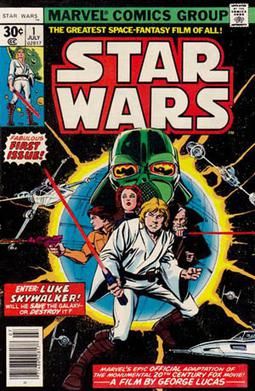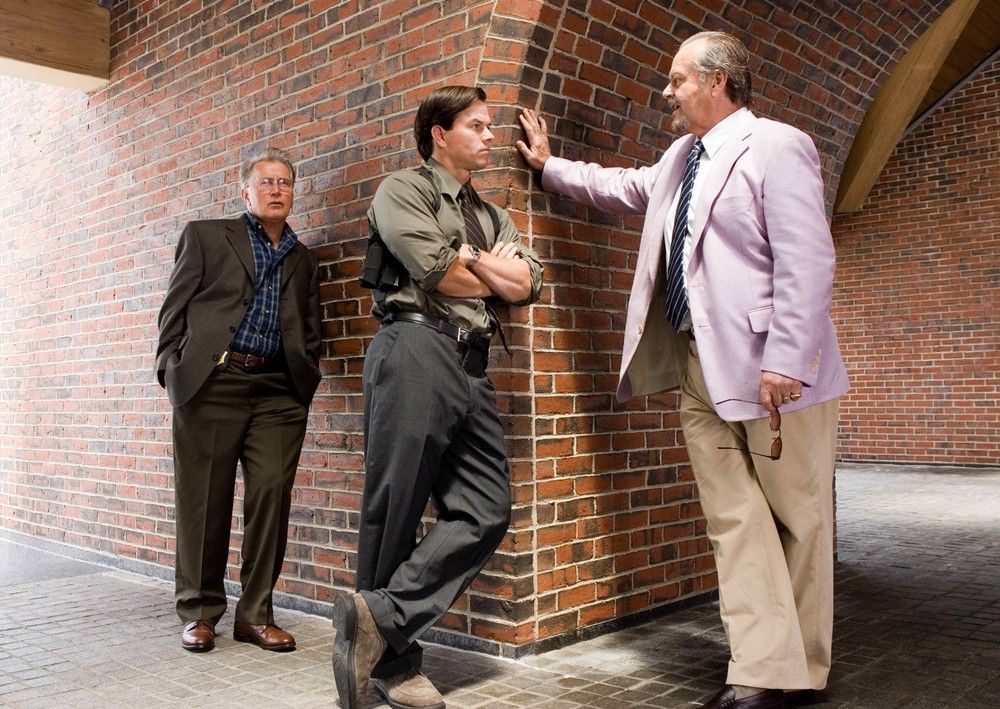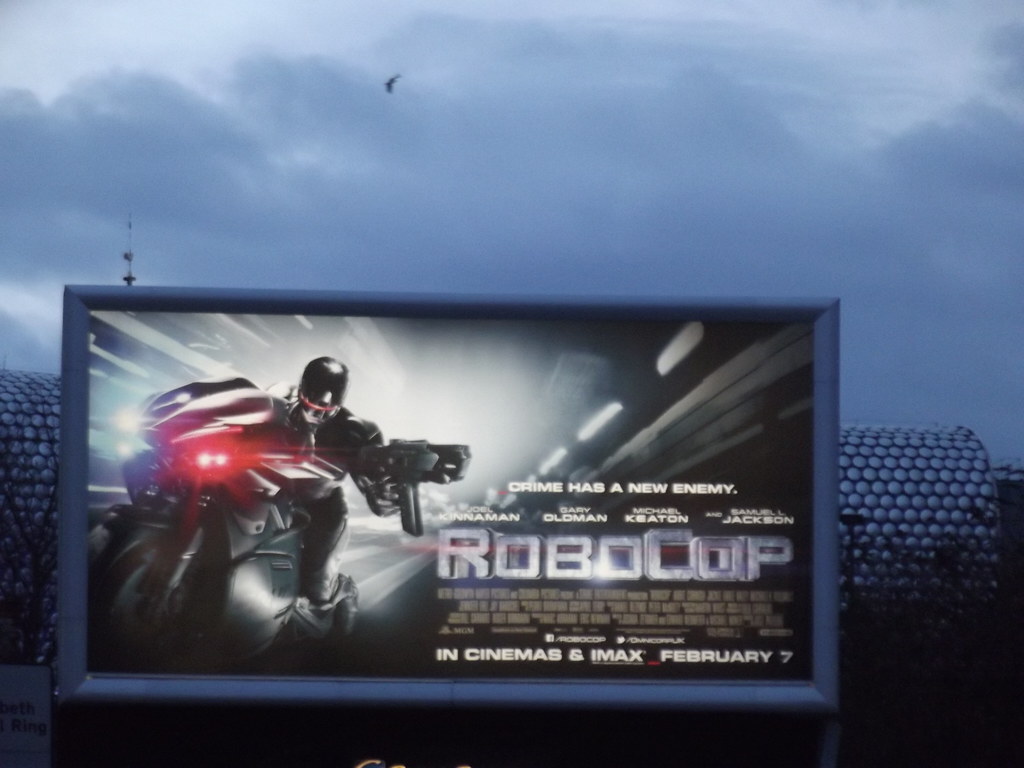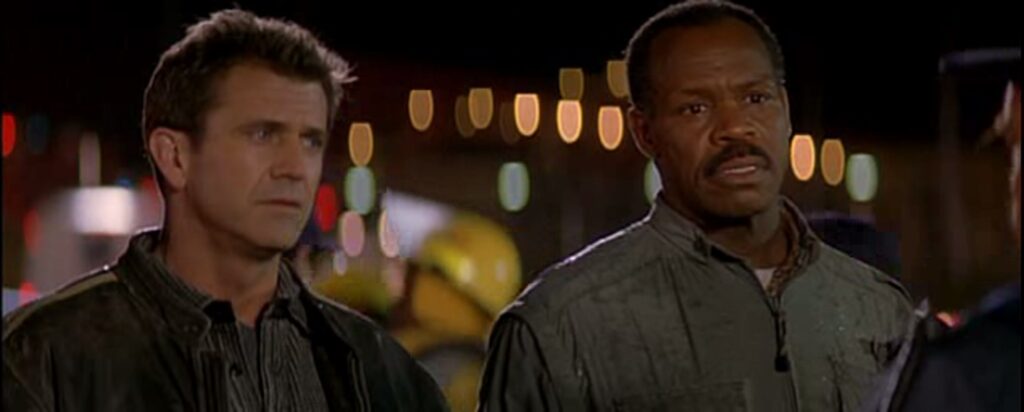
In the vast and enchanting universe of cinema, where heroes rise and narratives unfold, there’s an undeniable truth universally acknowledged by every moviegoer: the sweeter the villain, the more satisfying their ultimate defeat. A truly compelling antagonist isn’t just a hurdle for our protagonists; they are the crucible in which heroism is forged, the darkness that highlights the light. When these formidable forces of evil finally get their just desserts, a grand sense of catharsis washes over us as justice is served.
We might grow to admire the sheer audacity or cunning of cinema’s most iconic baddies, recognizing their integral role in shaping the stories we love. Yet, deep down, there’s an inherent human desire to see wrongdoers pay for their crimes, especially when those crimes are of a particularly heinous nature. A villain’s downfall, particularly their death, isn’t just a plot device; it’s a fundamental release, a moment that solidifies the triumph of good over evil, reaffirming our belief in cinematic justice.
From epic sci-fi confrontations to historical revenge sagas and gritty action thrillers, the manner in which a villain meets their end can be as memorable, if not more so, than their reign of terror. Whether it’s a spectacularly violent demise, a fate sealed by their own hubris, or a poetic turn of events, these moments are etched into our minds. For characters so utterly awful, it’s hard not to feel a profound sense of relief once they’re gone. Join us as we journey through some of the most satisfying villain deaths ever depicted on the silver screen, celebrating those moments where we loved to watch them go.

1. **Alien Queen in ‘Aliens’ (1986)**The visceral thrill of seeing a monstrous antagonist finally bested is rarely as potent as in James Cameron’s 1986 sci-fi action masterpiece, ‘Aliens’. Audiences were treated to a more aggressive, militaristic Ripley, now fighting not just for survival, but for the protection of Newt. This maternal ferocity elevated the stakes, amplifying the eventual confrontation with the ultimate xenomorph threat: the Alien Queen.
The Queen is a formidable force, a creature of pure predatory instinct and terrifying power, serving as the matriarch of the entire xenomorph hive. Her presence looms large throughout the film, a constant, existential threat. Ripley’s journey culminates in a truly iconic showdown, a direct challenge to this primal evil that is both physically brutal and emotionally charged.
“Get away from her, you BITCH!” This legendary line, delivered by Ripley (Sigourney Weaver), perfectly encapsulates her raw, protective fury. It’s not just a fight; it’s a desperate struggle for the survival of humanity, embodied by Newt, against an unstoppable alien menace. Ripley, utilizing her wits and a power loader, faces off with the deadly Alien Queen in one of the best showdowns in movie history.
The Queen’s ultimate defeat is a spectacle of cinematic mastery. Ripley ingeniously maneuvers it towards the ship’s airlock, creating a vacuum that finally ejects the beast into the cold, unforgiving vacuum of space. The image of the Alien Queen desperately clinging to the shuttle before being blown away is immensely satisfying. It’s a hard-won victory, a true testament to Ripley’s resilience and a moment that cements her status as one of cinema’s greatest heroes.

2. **Hans Gruber in ‘Die Hard’ (1988)**No discussion of satisfying villain deaths would be complete without acknowledging the legendary Hans Gruber from John McTiernan’s 1988 classic, ‘Die Hard’. Portrayed with impeccable menace and sophisticated charm by the late, great Alan Rickman, Gruber isn’t just a bank robber; he’s an intelligent, calculating mastermind. His cool demeanor makes him all the more infuriating, and his downfall all the more gratifying.
Gruber’s villainy is a masterclass in psychological manipulation and ruthless efficiency. He orchestrates a complex heist under the guise of a terrorist attack, holding a skyscraper full of innocent people hostage. His constant verbal sparring with John McClane (Bruce Willis) reveals a sharp wit and unwavering arrogance, qualities that make him a truly memorable antagonist, even as we root for his demise.
The climax sees Gruber finally cornered, his meticulously planned operation unraveling. In his last remaining seconds, he knows he’s about to dramatically plunge to his death. However, villainous kudos for trying to drag hostage Holly (Bonnie Bedelia) over the edge with him and shoot hubby John (Bruce Willis) before he goes. This final act of desperation and spite is quintessential Gruber.
Similar to how the big boss of RoboCop dies, Hans Gruber is also flung from the edge of a high-rise, falling to his death with a satisfying splat. It’s a moment of visceral justice, a literal fall from grace for a man who believed himself untouchable. The slow-motion shot of his stunned, wide-eyed expression as he plummets is iconic, delivering a perfect blend of shock, relief, and undeniable satisfaction. Happy trails, Hans!
Read more about: Rewriting the Narrative: 11 ’80s Movie Villains We’ve All Misjudged and Why They Deserve a Second Look Now!

3. **Commodus in ‘Gladiator’ (2000)**Ridley Scott’s ‘Gladiator’ provides a sweeping epic of betrayal, revenge, and redemption, centered around one of cinema’s most loathsome villains: Commodus. Played with chilling intensity by Joaquin Phoenix, Commodus is the embodiment of corrupt power. He’s an insecure son who craves his father’s love but chooses to seize power through heinous acts, setting in motion a defining chain of events.
Commodus’s descent into tyranny begins with parricide, killing his father, Emperor Marcus Aurelius. This prevents Maximus (Russell Crowe) from becoming the next emperor. His cruelty continues as he has Maximus’s family slaughtered when the General won’t fall in line, cementing his place as a truly despicable character. His actions fuel Maximus’s entire quest for vengeance.
The sheer magnetism of Joaquin Phoenix’s performance makes Commodus a character we love to hate. He is brilliant at playing a bastard, constantly deceiving, lying, and corrupting everything he touches. His sniveling demeanor and manipulative nature ensure that every move he makes further solidifies the audience’s wish for his brutal end, building immense tension.
It takes the whole damn movie, but Maximus, though mortally wounded, finally has his vengeance. The final duel between the two in the gladiatorial arena is a raw, brutal affair. Maximus grimly drives the blade home with the last of his strength. The sniveling Commodus meets his comeuppance in the most satisfying way possible after constant deception, lies and corruption, a deeply resonant moment of hard-fought justice.
Read more about: Chameleons of the Silver Screen: Unpacking the Unparalleled Versatility of 14 Iconic Actors Across Genres

4. **Donovan in ‘Indiana Jones and the Last Crusade ‘(1989)**The ‘Indiana Jones’ franchise is no stranger to thrilling escapades and memorable villains. Walter Donovan from ‘Indiana Jones and the Last Crusade’ stands out for a particularly poetic and visually striking demise. Julian Glover portrays Donovan as a seemingly benevolent, wealthy American art collector. However, beneath this veneer lies a cunning, ruthless Nazi sympathizer, willing to do anything for eternal life.
Donovan’s villainy is rooted in his insatiable greed and his alliance with the Nazis, the ultimate cinematic antagonists. He manipulates Indy and his father, Henry Jones Sr., into helping him find the Holy Grail. This demonstrates a cold pragmatism that makes him a truly detestable figure. His willingness to betray, endanger, and kill for selfish desires ensures his eventual fate feels earned.
The climax in the Grail Temple is a masterclass in suspense and moral choice. Indy warns Donovan that choosing the wrong chalice will lead to disaster. The villain, blinded by his own arrogance and desire for grandeur, utterly fails this test of faith and humility. He ignores the wisdom of the Grail Knight and, choosing the fanciest cup, earns not Eternal Youth, but Instant Shriveling Death.
This grotesque transformation is a moment of perfectly poetic justice. Donovan’s desire for the most opulent prize leads directly to his horrific demise. His body rapidly ages and disintegrates into dust before our eyes. Ewwww. It’s a visually stunning and deeply satisfying end for a man who embodied the greed and hubris that stood in direct opposition to the sacred quest, demonstrating the consequences of avarice.

5. **Nazi Villains in ‘Raiders of the Lost Ark’ (1981)**When it comes to universally despised antagonists, the Nazis in ‘Raiders of the Lost Ark’ occupy a special, cathartic place in cinema history. Steven Spielberg’s seminal adventure film pits Indiana Jones against a relentless force of Nazi zealots. They seek the Ark of the Covenant, believing its power will make their armies invincible. Their sheer villainy makes their ultimate, collective demise one of the most celebrated moments in action cinema.
The Nazis, as a faction, represent historical evil. In ‘Raiders’, they are depicted as merciless, arrogant, and utterly blind to the spiritual power they seek to exploit. They desecrate ancient sites, threaten innocent lives, and relentlessly pursue the Ark with a chilling single-mindedness. This portrayal makes it incredibly easy for the audience to root against them, fostering a profound desire to see them utterly defeated.
The ending of ‘Raiders of the Lost Ark’ is a spectacular payoff. Seconds after this celebratory photo of opening the Ark of the Covenant was taken, these despicable Nazi villains were face-melted by the Wrath of God. It was awesome. As Indiana Jones (Harrison Ford) is tied to a pole, one wonders how he’ll get himself out of this scrape. All he needs to do is close his eyes whilst he watches the Nazis foil their own plan, opening the Ark of the Covenant.
They are each killed by an ancient evil. This supernatural retribution is both shocking and incredibly satisfying. The sight of Nazi after Nazi getting their head melted, exploded or disintegrated by the unleashed power of the Ark is a visceral, unforgettable spectacle. It’s a unique form of justice, where their hubris in believing they could control divine power leads to their utterly gruesome, well-deserved annihilation.

6. **Magua in ‘The Last of the Mohicans’ (1992)**Michael Mann’s ‘The Last of the Mohicans’ is a dramatic thriller featuring a villain whose relentless hatred and capacity for cruelty make his ultimate defeat profoundly impactful. Magua, powerfully portrayed by Wes Studi, is a Huron warrior driven by a deep-seated desire for vengeance against the British colonel who wronged him. His actions throughout the film are nothing short of barbaric.
Magua’s villainy is fueled by a consuming, personal hatred. His vengeance is not just about battle. He not only cuts out the man’s heart, but vows to “wipe his seed off the earth” by killing his two daughters. This level of personal, brutal vendetta makes him a truly chilling antagonist. The audience feels the weight of his rage and the imminent threat he poses to the film’s protagonists.
Beloved by fans and critics, Michael Mann’s ‘Last of the Mohicans’ is fueled by a brilliant villain who is deceitful and deliciously dislikeable. Magua’s unwavering focus on his bloody mission creates a sense of dread and suspense. Every encounter with him is fraught with tension. His ability to kill without hesitation, even women and children, establishes him as a formidable and terrifying force.
The final clifftop battle, in which he kills one fierce Mohican warrior, and then is fatally struck down by “the last Mohican,” Chingachgook (Russell Means), is epic and profoundly meaningful. It’s a powerful bookend to Mann’s 1990s classic. Magua meets his demise at the end of the film after a meaningful duel with Chingachgook. This is not just a physical fight; it’s a clash of ideologies and personal histories, concluding with a hard-won justice.

7. **T-800 in ‘The Terminator’ (1984)**The original T-800 from James Cameron’s ‘The Terminator’ set the standard for relentless, seemingly unstoppable cinematic villains. Played by Arnold Schwarzenegger with chilling, emotionless precision, the T-800 is a cyborg sent from the future by Skynet. Its mission is to terminate Sarah Connor, whose unborn son, John, will lead the human resistance against the machines. Its iconic status and unwavering pursuit make its eventual destruction a pinnacle of satisfying villain deaths.
The T-800’s dastardly deeds are mechanical and brutal. By 2029, an artificial intelligence network called Skynet has ended human civilization in a nuclear holocaust. Skynet sends the T-800 back in time to eliminate John’s mother Sarah. A metal android disguised by living tissue, the Terminator can pass for human and slays anyone who gets in the way of its mission. Its cold, methodical efficiency creates a palpable sense of terror.
The relentless pursuit by the T-800 is what makes it so terrifying. Sarah Connor (Linda Hamilton) and Kyle Reese (Michael Biehn) are constantly on the run. Their lives are a desperate struggle against a machine that simply will not stop. This sustained tension builds an immense desire within the audience to see this metallic nightmare finally incapacitated, for good.
In a final, desperate struggle, Sarah draws what’s left of the machine into a hydraulic press and annihilates it. Sarah escapes, and though she does not avert Judgement Day, her son John will be born. The seemingly unstoppable killer cyborg is finally crushed to death with handy factory hydraulics. Sarah Connor pushes the button and announces, “You’re terminated.” This declaration, delivered with grim satisfaction, caps off one of cinema’s most iconic and cathartic villain demises.
Continuing our deep dive into the most deliciously satisfying villain deaths in movie history, we turn our gaze to a new set of antagonists whose arrogance, cruelty, or sheer evil sealed their definitive, and often spectacular, ends. These are the moments that truly stick with you, reaffirming that justice, no matter how grim or over-the-top, often finds a way to catch up with the bad guys. Prepare for more cinematic catharsis as we celebrate these epic falls.
Read more about: Rewriting the Narrative: 11 ’80s Movie Villains We’ve All Misjudged and Why They Deserve a Second Look Now!

8. **Annie Wilkes in ‘Misery’ (1990)**Stephen King has a knack for creating villains who get under your skin, and Annie Wilkes, brought to terrifying life by Kathy Bates, is a prime example. Initially appearing as a kind Samaritan who rescues her favorite author, Paul Sheldon, from a car crash, Annie quickly reveals herself to be an emotionally disturbed nurse with a dangerous obsession. Her intense fixation on Paul’s fictional character, Misery Chastain, sets the stage for a psychological thriller that is as nail-biting as it is disturbing.
Annie’s villainy escalates dramatically once she discovers Paul’s intention to kill off Misery in his latest manuscript. Her rage knows no bounds, leading her to burn his work and force him to write a new novel that resurrects the beloved character. Every attempt Paul makes to escape is met with increasingly brutal countermeasures, culminating in the infamous scene where Annie shatters his ankles with a sledgehammer, immobilizing him and cementing her place as one of cinema’s most terrifying captors.
The ultimate confrontation is a brutal, desperate struggle for survival. After finishing the new manuscript, Paul cunningly sets it on fire, knowing Annie’s obsession will draw her away from him. As she frantically tries to save the pages, Paul retaliates, bashing her over the head with the typewriter and stuffing her mouth with the burning manuscript pages. The subsequent, arduous fight sees Paul finally end her reign of terror by striking her with a heavy vase, a hard-won victory that delivers immense satisfaction to audiences who have endured months of her horrific abuse. It’s a moment of pure, unadulterated relief.
Read more about: 90s Box Office Giants: Movies That Made Millions (and Some Might Surprise You)

9. **T-1000 in ‘Terminator 2: Judgment Day’ (1991)**If the original T-800 set the bar for relentless cyborg antagonists, the T-1000 from James Cameron’s ‘Terminator 2: Judgment Day’ raised it to an almost insurmountable level. Portrayed with chilling, emotionless efficiency by Robert Patrick, this advanced liquid metal shapeshifter was designed as the ultimate killing machine, sent from the future to terminate a young John Connor. Its expressionless cop face, coupled with its seemingly indestructible nature, made it a truly formidable and terrifying foe.
The T-1000’s villainy is rooted in its cold, unfeeling mission and its ability to mimic anyone it touches. It doesn’t just pursue its targets; it systematically eliminates anyone who stands in its path, adapting to every obstacle with ruthless precision. The sheer dread it inspires comes from its apparent invincibility, its ability to reform from any damage, and its relentless, unyielding pursuit of John and Sarah Connor. It was built to finish the job its predecessor failed, and it approached its task with a terrifying, unyielding resolve.
The final showdown, set amidst the fiery chaos of a steel mill, pits the T-800 (now a protector) against its more advanced counterpart. The T-1000 endures incredible damage, yet keeps coming, until it is finally knocked into a vat of molten steel. The sight of its liquid metal form struggling, contorting, and ultimately disintegrating in the extreme heat is a visual spectacle. It’s an iconic and deeply satisfying demise, marking the definitive end for a murder-bot whose turncoat predecessor started it all. Not so invincible anymore, eh buddy?
Read more about: Hold Up! These 14 Movie Sequels Absolutely Crushed Their Originals, And We’re Here For It!

10. **Emperor Palpatine in ‘Star Wars Episode VI: Return of the Jedi’ (1983)**The architect of the Galactic Empire and the true face of evil, Emperor Palpatine is a villain of immense power and malevolence. In ‘Star Wars Episode VI: Return of the Jedi’, he represents the ultimate dark side threat, seeking to corrupt Luke Skywalker and solidify his iron grip on the galaxy. His manipulative nature and dark influence are palpable throughout the original trilogy, making his eventual downfall one of the most celebrated moments in cinematic history.
Palpatine’s dastardly deeds include orchestrating the fall of the Republic, the Jedi Order, and the transformation of Anakin Skywalker into Darth Vader. In ‘Return of the Jedi’, his ambition culminates in a plan to replace Darth Vader with a younger, less disfigured model—Luke Skywalker. He attempts to lure Luke to the dark side, using psychological torment and painful Force lightning, demonstrating his absolute cruelty and his desire for absolute power, at any cost.
His demise comes at the hands of the very apprentice he sought to replace. Watching his mentor attempt to electrocute his son to death apparently does a lot to an estranged parent, and this act pushes Darth Vader to finally redeem himself. In a powerful moment of sacrifice, Vader grabs Palpatine and hurls him down the Death Star’s reactor shaft, ending his reign of terror. It’s a poignant and intensely satisfying death, as the Emperor’s hubris and cruelty are ultimately undone by the very darkness he cultivated.

11. **Colin Sullivan in ‘The Departed’ (2006)**Martin Scorsese’s ‘The Departed’ is a masterclass in cat-and-mouse crime, where deceit and betrayal permeate every corner. Colin Sullivan, played by Matt Damon, stands out as a particularly loathsome antagonist. He’s a state trooper living a double life, groomed from a young age by Irish mob boss Frank Costello to be an informant within the police force. His cunning and ability to evade capture make him a frustratingly effective antagonist.
Colin’s villainy is a slow burn, steadily building audience hatred as he navigates the treacherous underworld. He consistently makes dirty moves, covering his tracks and eliminating anyone who threatens his carefully constructed identity. His cold pragmatism extends to killing his own mob boss and longtime mentor, Costello, all in the name of self-preservation. This calculated ruthlessness ensures that the audience’s desire for his comeuppance grows with every scene.
By the film’s climax, it seems as though Colin has successfully cleared all obstacles and secured his position, appearing to be in the clear. However, the intertwined fates of the characters in ‘The Departed’ mean that no one truly escapes the consequences of their actions. His ultimate demise is both sudden and profoundly satisfying: upon entering his apartment, he is met by Staff Sergeant Sean Dignam, who, with a single, decisive shot to the head, delivers the hard-earned justice the audience has been craving. It’s a fitting end for a man who believed himself untouchable, finally brought down by the very system he corrupted.

12. **Clarence J. Boddicker in ‘RoboCop’ (1987)**Paul Verhoeven’s ‘RoboCop’ is a cult classic that delivers a powerful satirical punch, and its main antagonist, Clarence J. Boddicker, is a villain tailor-made for a spectacular demise. As the head henchman for an evil corporate president, Boddicker is a ruthless gangster with a penchant for gratuitous violence. His role in the brutal murder of police officer Alex Murphy is what sets the entire narrative in motion, transforming Murphy into the titular cyborg hero.
Boddicker’s villainy isn’t just about following orders; it’s about sheer sadism. He takes perverse pleasure in killing cops for fun, an act that truly makes him detestable in the eyes of the audience. His smug arrogance and complete lack of remorse make him a character we desperately want to see punished. He is the immediate, visceral cause of Murphy’s transformation and the target of RoboCop’s unwavering quest for justice, representing the brutal, lawless elements of Old Detroit.
The final confrontation between RoboCop and Boddicker at a drug factory is a visceral and highly anticipated moment. RoboCop, equipped with cool tech and a burning desire for retribution, finally gains the upper hand. In a moment of poetic justice, Boddicker is impaled by a metallic spike—a consequence of his own technologically advanced villainy. This leads to him plummeting to his death from the top of a high-rise building, mirroring the demise of another iconic villain, Hans Gruber. It’s an utterly satisfying end for a man who thought he could get away with anything.

13. **Norman Stansfield in ‘Léon: The Professional’ (1994)**Gary Oldman’s portrayal of Norman Stansfield in Luc Besson’s ‘Léon: The Professional’ is a masterclass in cinematic villainy. Stansfield is a corrupt, drug-addicted DEA agent who embodies chaotic evil. His erratic behavior, coupled with his chillingly calm moments of cruelty, makes him a truly unforgettable and deeply unsettling antagonist. He’s a man utterly consumed by his vices, leaving a trail of destruction in his wake.
Stansfield’s dastardly deeds are horrifyingly personal. He brutally murders the family of twelve-year-old Mathilda, including her young brother, in a drug deal gone wrong. This act of senseless violence ignites Mathilda’s quest for revenge, leading her to form an unlikely alliance with the professional hitman, Léon. Stansfield’s heavy pursuit of both Léon and Mathilda throughout the film solidifies his position as a despicable character, ensuring audiences yearn for his ultimate downfall.
The climax sees Léon almost escape a deadly ambush, but not before Stansfield delivers a fatal shot to his back. However, Léon has one last, explosive trick up his sleeve. In a final, defiant act, he hands Stansfield a seemingly innocuous object, revealing it to be a grenade. The ensuing explosion is a moment of profound catharsis, as the deranged detective meets his maker in a spectacularly violent fashion. It’s a fiery end for a man whose addiction and brutality earned him a place among cinema’s most hated villains, and a farewell present that truly keeps on giving.

14. **Arjen Rudd in ‘Lethal Weapon 2′ (1989)**’Lethal Weapon 2’ introduces audiences to Arjen Rudd, a South African consul-slash-smuggler who epitomizes the frustrating concept of diplomatic immunity. Portrayed by Joss Ackland, Rudd is an all-around awful character whose criminal activities are shielded by his government protection. This legal loophole makes him incredibly infuriating, particularly for Riggs and Murtaugh, who are constantly thwarted in their attempts to bring him to justice.
Rudd’s villainy extends beyond simple smuggling; he is a cruel, calculating individual who orchestrates numerous violent acts, including murder, all while hiding behind his diplomatic status. His arrogance and belief in his untouchability are infuriating, making him a perfect foil for the loose-cannon Riggs and the by-the-book Murtaugh. The audience shares in the detectives’ frustration, building a palpable desire to see Rudd stripped of his immunity and face the consequences of his actions.
The investigation into Rudd’s dealings culminates in a climactic shootout where, finally, the blanket of government protection is removed. Riggs confronts Rudd, who smugly reminds him that he still has diplomatic immunity, even as Riggs holds him at gunpoint. Riggs, ever the rule-breaker, then delivers one of the most iconic and cheesy, yet utterly satisfying, send-off lines in cinema history: “Diplomatic immunity.” *shoots Rudd* “It’s just been revoked.” It’s a moment of pure, unadulterated triumph, a direct answer to the maddening injustice, and a perfectly over-the-top end for a villain who thought he was above the law.
And so, our journey through the annals of cinematic justice concludes, having celebrated those unforgettable moments when evil finally got its just deserts. From the crushing end of a persistent stalker to the explosive demise of a corrupt agent, and the spectacular falls of alien queens and tyrannical emperors, these villain deaths are more than mere plot points. They are powerful releases, reaffirming our collective hope that even the darkest forces can be vanquished. These are the moments we love to watch, the definitive, often brutal, send-offs that remind us why heroes fight, and why the good guys, eventually, always win. The curtain falls, the bad guys are gone, and we wouldn’t have it any other way.



